Bunnies not welcome! The valuable work of Queensland's Rabbit Boards
By Simon Miller, Library Technician, State Library of Queensland | 2 April 2013
Chocolate bunnies may be permitted but the real thing has been banned in Queensland since the 1880s. At that time a great plague of rabbits was spreading over the country causing widespread devastation. The plague seems to have originated with a dozen or so wild European grey rabbits released in Victoria in 1859 to provide sport for game-shooting and coursing on the estates of wealthy squatters. As the rabbit menace edged closer to Queensland the State Government was called upon to act. Mr E. J. Stevens, Member for Warrego, introduced a Bill to Prevent the Introduction of Rabbits into the Colony of Queensland in August 1880 and A Bill to Prohibit the Keeping of Rabbits in the Colony of Queensland and to Authorise their Destruction was introduced in July 1885. The government also proposed to build a fence to keep the rabbits from crossing into Queensland from South Australia and New South Wales. This proposal did not meet with universal acclaim, however, work began on the fence in 1886.
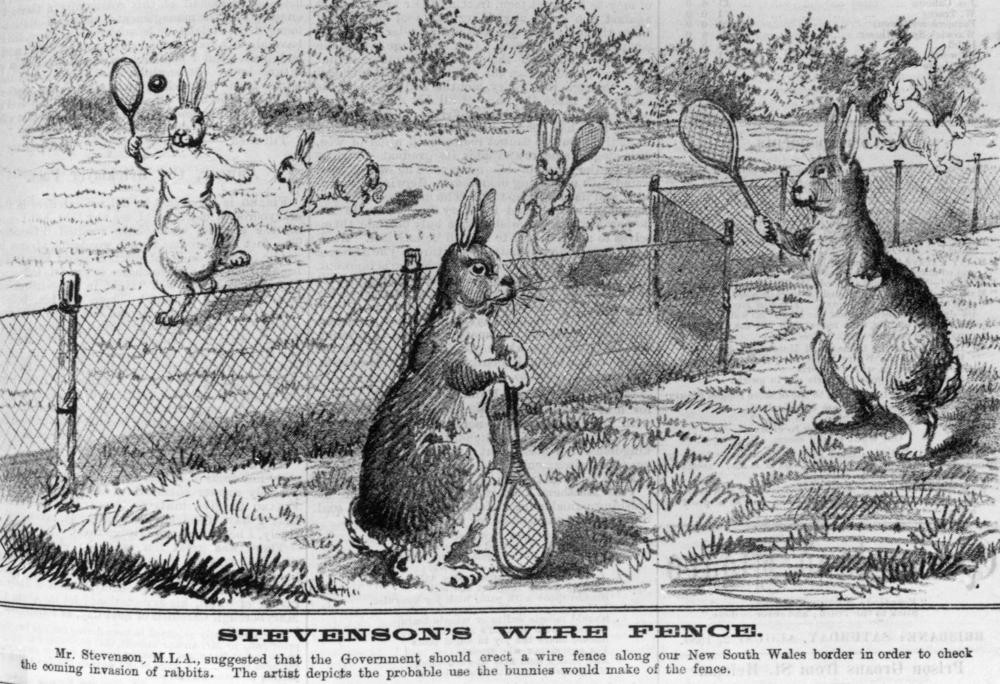
In 1891 the Rabbits Board Act established a number of boards charged with building and maintaining rabbit proof fences. Rabbit Boards were established in Warrego, Maranoa, Mitchell, Gregory North and Leichhardt in 1892 and the Darling Downs Rabbit Board was split off from the Maranoa Board in 1893. The library holds several publications on the work of the Rabbit Boards. The Maranoa Rabbit Board : a synopsis of its work from April, 1892, to June, 1897 by C. L. Morgan covers the early history of the Maranoa Board and Keeping rabbbits out : Darling Downs-Moreton Rabbit Board by Rae Pennycuick is a comprehensive history of the Darling Downs and Moreton Boards, which were combined in 1964. C. L. Morgan, Clerk of the Maranoa Rabbit Board also published The rabbit question in Queensland in 1898.
The rabbit question quotes a report from the Brisbane Courier describing the road from Broken Hill to Wilcannia to illustrate the need for action against the rabbit invasion.
Emptiness, loneliness, and desolation characterise this plain country. It is a manless land, and the tread of the rabbit has beaten the life out of it ... the bleached bones of sheep are strewn along the road, marking the track of gaunt famine, and at every few yards there are deserted rabbit warrens. Bunny has eaten himself out of this land, but his tracks are painfully clear. Of herbage there is none; the salt bush has been eaten bare of leaves, and the sharp sunlight makes the clumps of dry sticks look quite grisly. The trees have been stripped of their bark, and they have withered and gradually died like one possessed of leprosy. About twelve months ago this plain was abundantly covered with grass and foliage. Then came grasshoppers and rabbits. It was a fight for food, and there were three claimants -- the sheep, the grasshoppers, and the rabbits. Dainty little bunny ate out the grasshoppers and the sheep, cleared out all the grass, the trees, and the edible bushes, and marched on.
Much of the history in Keeping rabbits out revolves around somewhat dry details of finances, methods of construction and availability of materials, however the foreword, written by Geoff Smith, the then Minister for Lands, points out a more interesting story that is contained within the dry account.
"... it recounts a remarkable commitment by numerous men and their families to 'keeping rabbits out' of south-east Queensland. It provides an insight into the dedication and persistence of individuals and families who devoted their working lives to the Rabbit Boards. In many cases, sons or brothers followed relatives into the employ of the Boards, maintaining family involvements that spanned three generations. For many people the control of rabbits was a way of life."
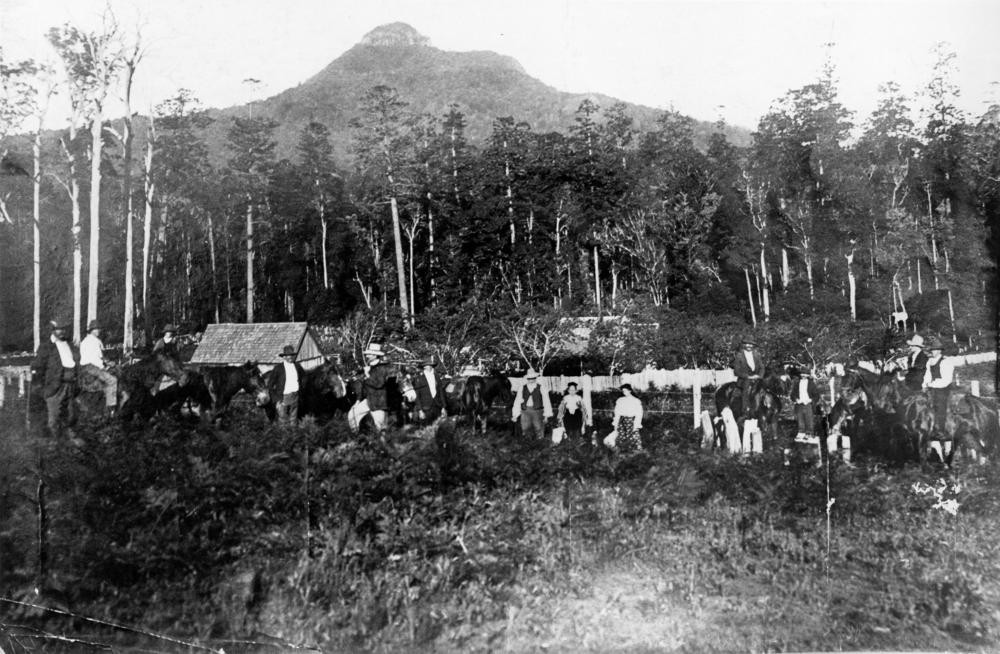
Building the fences was only the beginning of the process. Boundary riders had to be employed to continuously inspect the fences and repair any damage. Cottages were provided for the boundary riders and their families but these were very primitive and isolated.
Boundary rider George H Stewart was appointed in April 1899 to patrol the Cameronian section along the Gerries Range. In 1900, when the Chairman, Mr F. A. Gore, thought that the cottages at Brigalow, Rocky Creek and Cameronian should have ceilings in the main rooms, the Board supplied timber for the men to erect their own ceilings. Stewart was the only boundary rider willing to try to put the ceiling up. The others felt the job was beyond them and did not want to spoil the cottages or the timber.
... By 1907, Mr Stewart found it almost impossible to make ends meet on the boundary rider's wages which were still £75 per annum, the same as when he first entered the service of the Board eight years previously. He had seven children. The cost of food had increased and when there were sickness expenses, it was '...struggle and pinch to pay up'. ... The board decided to give boundary riders an increase of £10 per annum in their wages as from 1 June 1907. Mr G. H. Stewart remained with the Darling Downs Rabbit Board, having given 44 years of faithful service when he resigned from the employ of the Board in 1943.
Loneliness was also a problem. One boundary rider wrote that he wanted to leave the work at once because he could not stand being alone. However, so that it would not put the inspector to any bother, he arranged for his brother to take the work until a permanent boundary rider was appointed. He asked the inspector to visit his fence to see that he had it all in order and free from suckers.
As well as these many all but anonymous boundary riders, the Rabbit Board story involves some of the most prominent citizens of the day. The first chairman of the Darling Downs Rabbit Board was Mr G. G. Cory who held the post for a few months until the first election of Board members and later held the position of Chairman from 1904 until 1917 when he sold his property. Gilbert Gostwyck Cory came to Toowoomba from New South Wales at the age of 19. He obtained work with the Hon. James Taylor and was soon managing his Cecil Plains property on the Condamine. He took up a half share of a property on the Thompson River with his brother Henry and later had his own property on Cecil Plains which he named Vacy Plains which he developed into one of the best properties in the district. Cory was on the committee of the Royal Agricultural Society for 37 years. He was a founding member of the Toowoomba Turf Club and served on the Jondaryan Shire Council for 36 years and was Mayor of Toowoomba in 1891.
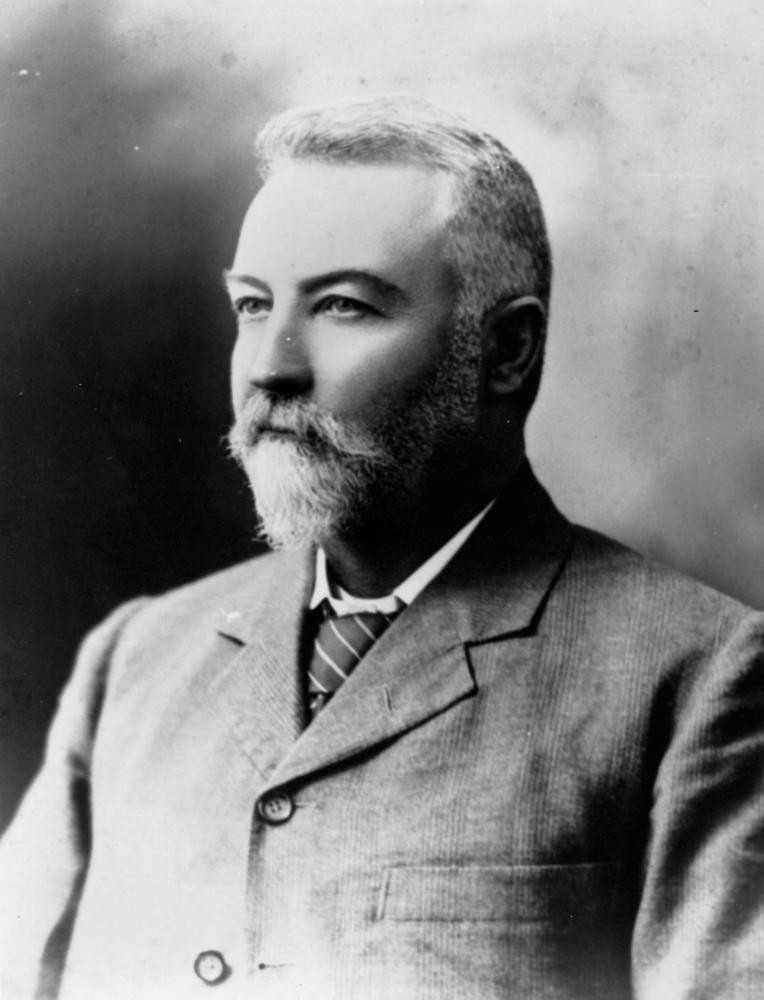
The first elected Chairman of the Board was Mr Frank A. Gore, who served as Chairman from 1894 until his resignation due to ill health in 1903. Frank Gore's Yandilla estate is described in some detail in an article in the Brisbane Courier of 1889. The correspondent was obviously much impressed the the sophistication of the set up.
Yandilla is quite a little township; the several houses for employees, the store, workshops, numerous sheds, and the little church being sufficiently numerous to form a street. In one large machinery shed I noticed a first class thrashing machine, reapers, mowers, and other agricultural implements. There is an engine-house, and in it a 6-horse engine, driven by an 8-horse Cochrane boiler, its duty being to saw wood, cut chaff, and crush corn. … The little private workshop of Mr. F. A. Gore is a model of neatness, and is replete with every possible tool from the most complicated of lathes to the latest shape of gimlet or bradawl. Near adjoining this is the photographic studio, and the many beautiful views I was shown of neighbouring scenery, &c., proved that Mr. Gore is as much at home with the camera as with the scroll-saw, turning lathe, or at the carpenter's bench. … All the gates on Yandilla, whether big or little, are strengthened by a diagonal iron-rod stay extending from the top of the heel post to the foot of the front head. I challenged this design as faulty, because there was no diagonal wooden strut from the foot of the heel-post to the top of the head front, but Mr. Gore defied me to find a single gate on the estate that had sagged in the slightest, and I must confess I could not, although I closely scanned every one I came across.
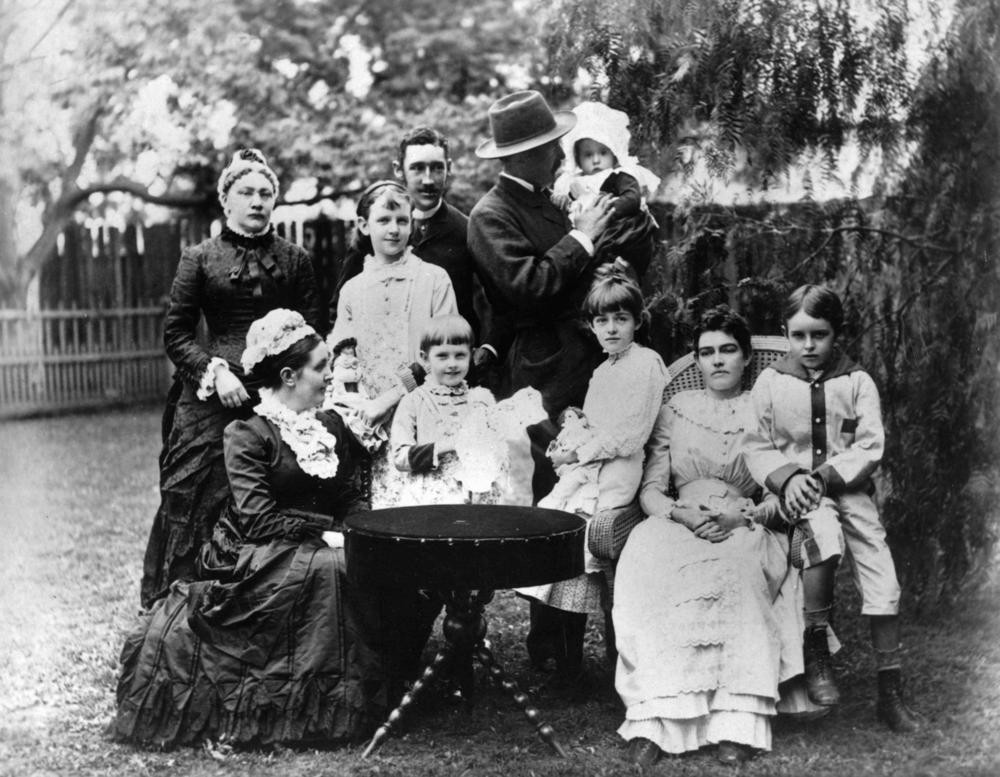
The work of the Darling Downs - Moreton Rabbit Board continues to this day. Their website has been archived in Pandora.
The Board’s role is to maintain the fence in rabbit-proof condition and to monitor compliance with the Land Protection (Pest and Stock Route Management) Act 2002. The board provides technical and other advice to landholders in the board operational area to assist with rabbit eradication. The board area is made up of 8 local authorities, and covers approximately 28,000 square kilometres (7 million acres). The board currently employs 17 staff and maintains 8 houses along the fence for the patrolmen and their families. Although most of the patrols are now done by motor vehicle or all terrain vehicles, some patrols must still be done on foot, due to the rugged nature of the terrain.
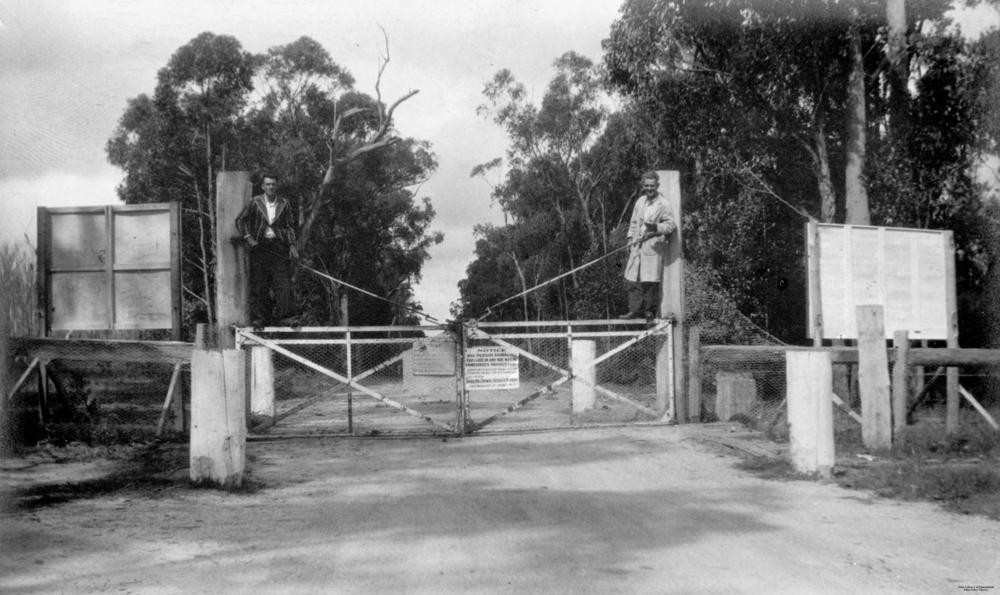
Simon Miller - Library Technician, State Library of Queensland
Comments
Your email address will not be published.
We welcome relevant, respectful comments.